Dive into our meticulously crafted keto diet food list, grounded on solid data revolving around the insulin index.
This guide paves the way in understanding how the balance of carbs, protein, and fibre impacts insulin levels, which is crucial for those aiming to manage diabetes or delve into a ketogenic dietary regimen.
With a downloadable PDF included, get ready to transform your diet and meet your health goals head-on.
Background
We put together a data-driven keto food list PDF that relies on insulin index, nutrient density, and satiety algorithm to give the ultimate food list. You can find a printable PDF at the end of the article.
- This identifies the most ketogenic foods using the insulin index of food.
- Ketosis occurs when there is a lack of oxaloacetate from non-fibre carbohydrates and protein. When this happens, our insulin levels drop, and our body switches to burning fat in the ketogenic pathway.
- The food insulin index data indicates that our insulin response to food is best predicted when we consider not just the carbohydrate but also the protein and fibre content of the food we eat.
- This improved understanding can help us prioritise foods with a lower insulin load and more accurately calculate our insulin dose.
Insulin index of food
The initial research into the food insulin index was detailed in a 1997 paper An insulin index of foods: the insulin demand generated by 1000-kJ portions of common foods by Susanne Holt, Jennie Brand-Miller and Peter Petocz who tested the insulin response to thirty-eight different foods.
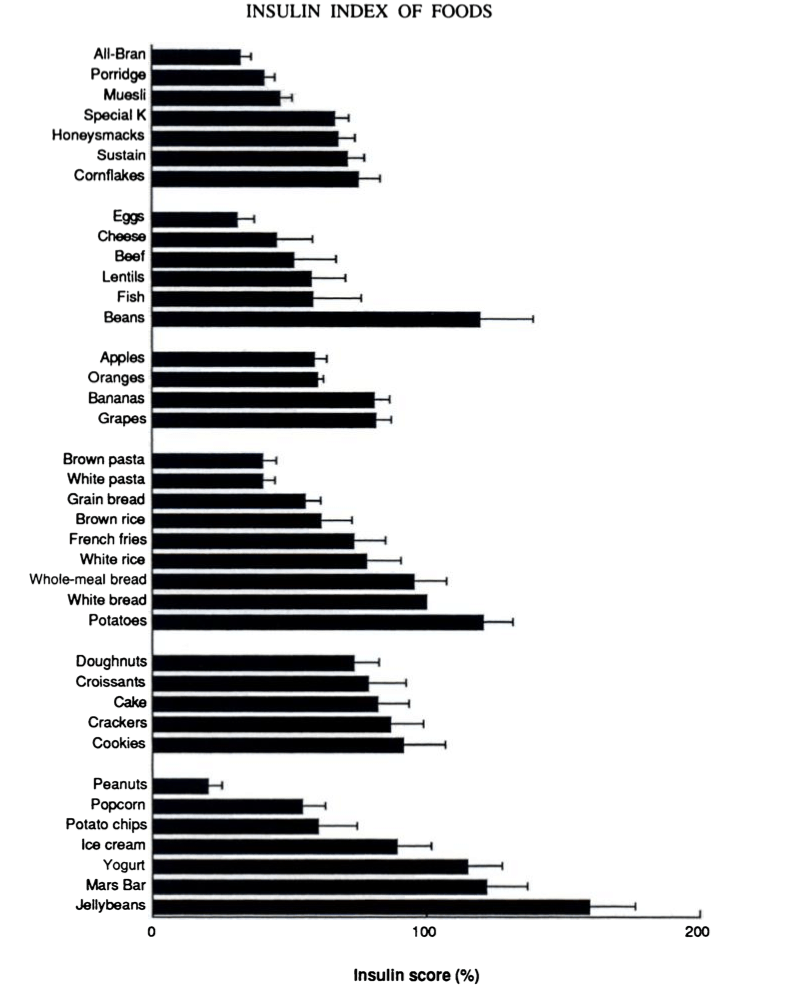
The insulin index of food score of various foods was determined by feeding 1000kJ (or 239 kcal) of different foods to non-diabetic participants and measuring their insulin response over three hours. This was then compared to the insulin response to pure glucose (which is assigned a value of 100%) to arrive at a “food insulin index” value for each food.
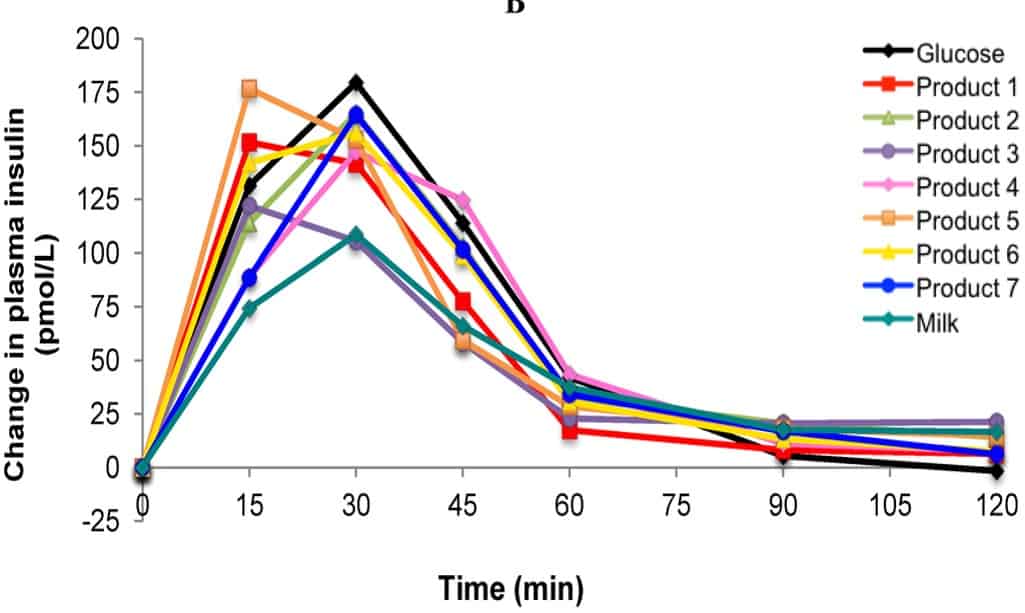
Unfortunately, due to the way the data was presented and the limited number of foods that had been tested, it was hard to make sense of this information in any practical way.
However, considering how significant this information could be for people trying to manage their insulin levels (e.g. insulin-dependent diabetics and people using therapeutic ketosis for the management of conditions like epilepsy, Alzheimer’s, Parkinson’s, cancer, etc.) I was surprised that there hadn’t been much further research or discussion on the topic. I found a few references and mentions in podcasts, but no one was quite sure what to do with the information, mainly because only a small number of foods have been tested.
Latest insulin index data
After doing a bit more digging, I came across a 2014 PhD thesis from the University Of Sydney titled Clinical Application of the Food Insulin Index to Diabetes Mellitus (Kirstine Bell), which contained a more extensive list of foods that had now been tested.
With this additional data, perhaps we can make more sense of the various factors that affect insulin, the master regulating hormone of our metabolism.
I plotted the carbohydrates versus the insulin response of more than one hundred foods. Although our insulin response is loosely correlated with the carbohydrate content of our food, we can see that high-protein foods such as steak, tuna and fish still require a significant amount of insulin.
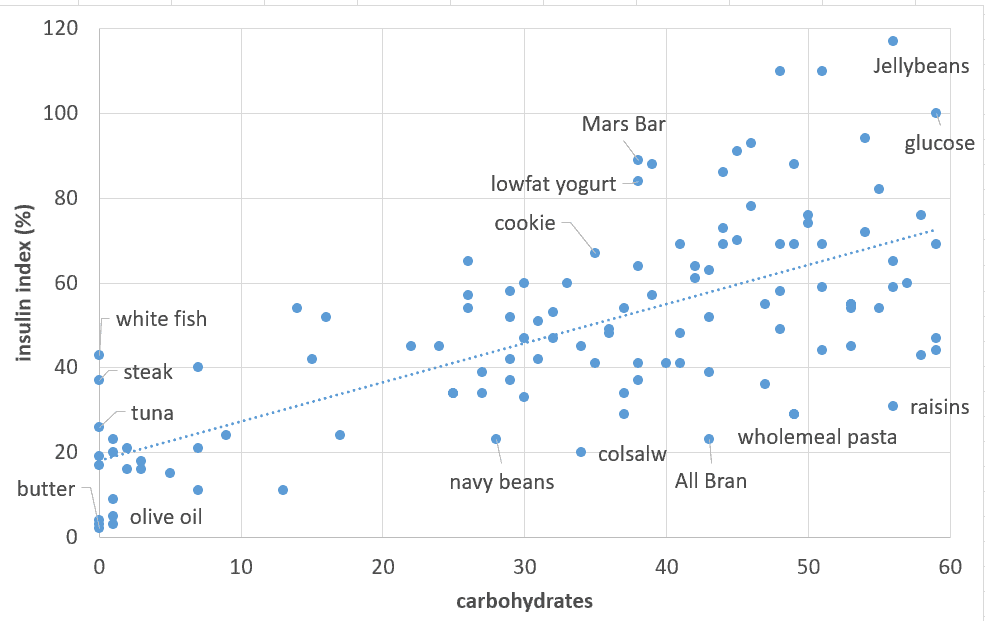
I ran some analysis on the data and found that we secrete about half as much insulin in response to protein compared to carbohydrates. We get the best correlation when we assume that indigestible fibre does not raise insulin.
Interestingly, fructose only requires about a quarter of the insulin as carbohydrate. It is mainly processed directly in the liver. However, about a quarter of the fructose is converted to glucose via gluconeogenesis.
Once we correct for protein, fibre and fructose, we get a much better prediction of the insulin response to food compared to carbohydrates alone.
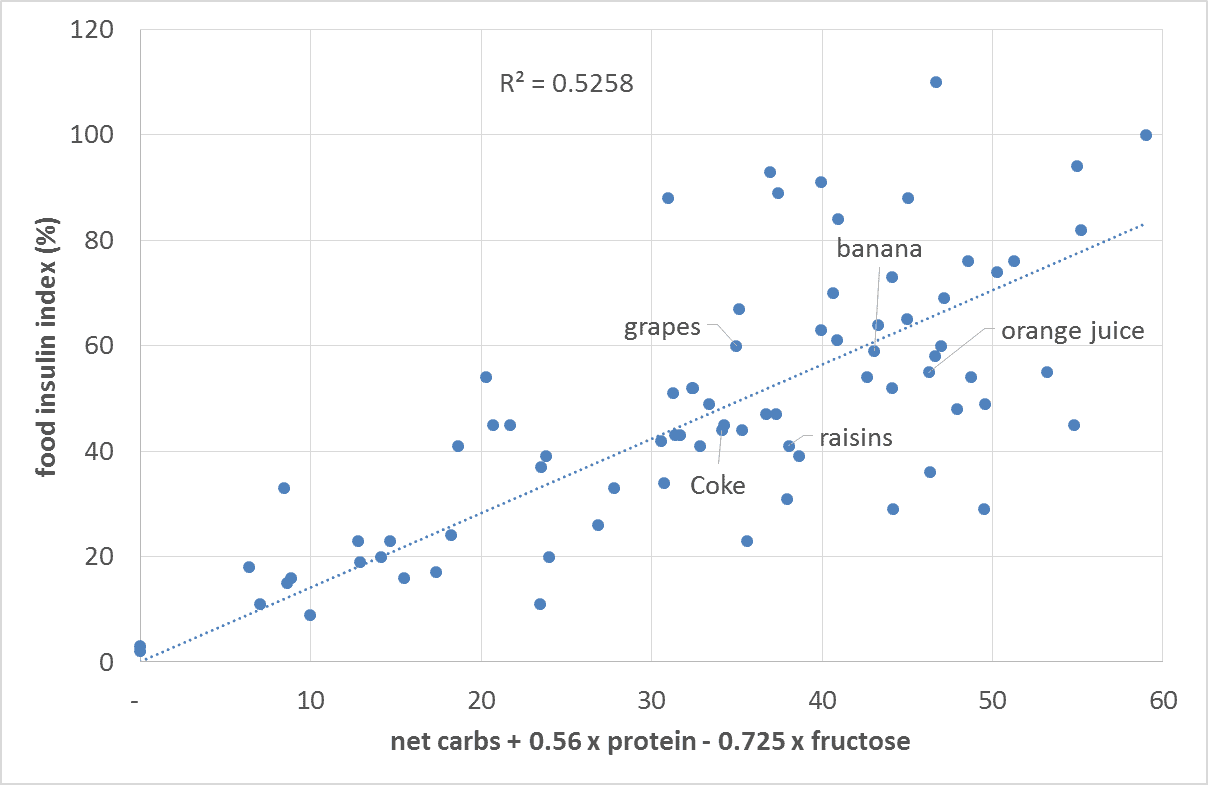
People wanting to follow a ketogenic diet will want to eat foods that lie more towards the bottom left of this chart. Using this understanding, we can also calculate the insulin load of our food. We can also estimate the proportion of the energy in our diet that requires insulin to metabolise or the “proportion of insulinogenic calories”.
Possible applications
Insulin is not a problem at healthy levels. However, we are understanding more and more that excess insulin (e.g. hyperinsulinemia, insulin resistance, Type 2 diabetes) is highly problematic, perhaps as much or more than high blood glucose levels. Many of our modern metabolic diseases seem to be closely correlated with our blood glucose control (e.g. diabetes, obesity, heart disease, stroke, cancer).
Understanding how to more accurately calculate our insulin response to food could enable us to manage our diet better to avoid elevated blood glucose and hyperinsulinemia.
The biggest challenge for someone with Type 1 Diabetes (like my wife) occurs when you require a large dose of insulin to address a high blood glucose level that is caused by eating non-fibre carbohydrates and large amounts of protein. The first logical step for someone managing diabetes is to reduce the insulin load of their diet so they can stabilise their
A more accurate understanding of insulin load can also help people with diabetes more accurately calculate their insulin dose or people trying to manage conditions like cancer or epilepsy through a therapeutic ketogenic diet.
For the rest of us who are somewhere on the insulin resistance scale, being able to calculate the insulin load of our diet will enable us to enable our pancreas to keep up with our diet and maintain healthy blood glucose levels.
The Analysis of the most ketogenic diet foods
Listed below are the most ketogenic foods. I have included some other parameters that may be of interest:
- Energy density – foods that contain high levels of fibre and water have a low energy density (i.e. calories per 100g) and will tend to make us full with fewer calories.
- Percentage of insulinogenic calories – this is the proportion of the energy in the food that will require insulin to metabolise.
- Insulin load – foods such as non-starchy vegetables have a higher percentage of insulinogenic calories, but because of their low energy density will have a very low insulin load per 100g of food, meaning that you will need to eat a lot of that particular food for it to affect your blood glucose or insulin significantly.
- Net carbohydrates – these are the digestible carbohydrates that will affect your blood glucose levels and insulin that remain after you account for the indigestible fibre.
The amount you need to prioritise each of these parameters depends on a range of considerations including your blood glucose control and your weight loss goals. Along with the insulin response to different foods, nutrient density and energy density are other parameters we can use to optimise our food choices.

The chart below shows the nutrients provided by the most ketogenic foods in comparison to the USDA foods database. We can see that there are quite some nutrients that are less available in most ketogenic foods compared to the average of the foods that are commonly available. While it is valuable to manage the insulin load of our diet, it is also important to maximise the nutrient density of our food as much as we can while still maintaining excellent blood glucose levels.
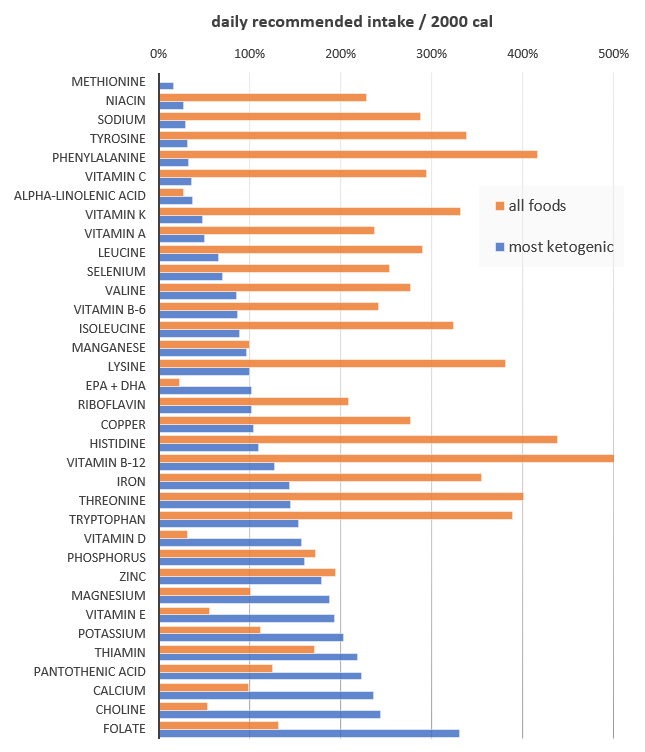
The Nutrient Optimiser has been designed to help you manage both the insulin load and the nutrient density of the foods you eat to enable you to stabilise your blood sugars while getting the micronutrients you need and maximise satiety. I invite you to get your free Nutrient Optimiser report to get your personalised list of foods suited to your goals and situation.
The most ketogenic foods
I have sorted the foods below by insulin load which will be useful if you are looking for foods to help you manage the short-term insulin load of your diet. Focusing on foods with a low percentage of insulinogenic calories will be useful if you are aiming for a high-fat therapeutic ketogenic diet. Focusing on foods with a low insulin load may be more useful if you want to lose weight and use some of your body fat for fuel.
eggs
Eggs are a staple for low carbers, ketogenic dieters and diabetics. Not only are they nutritious they are also low in carbohydrates.
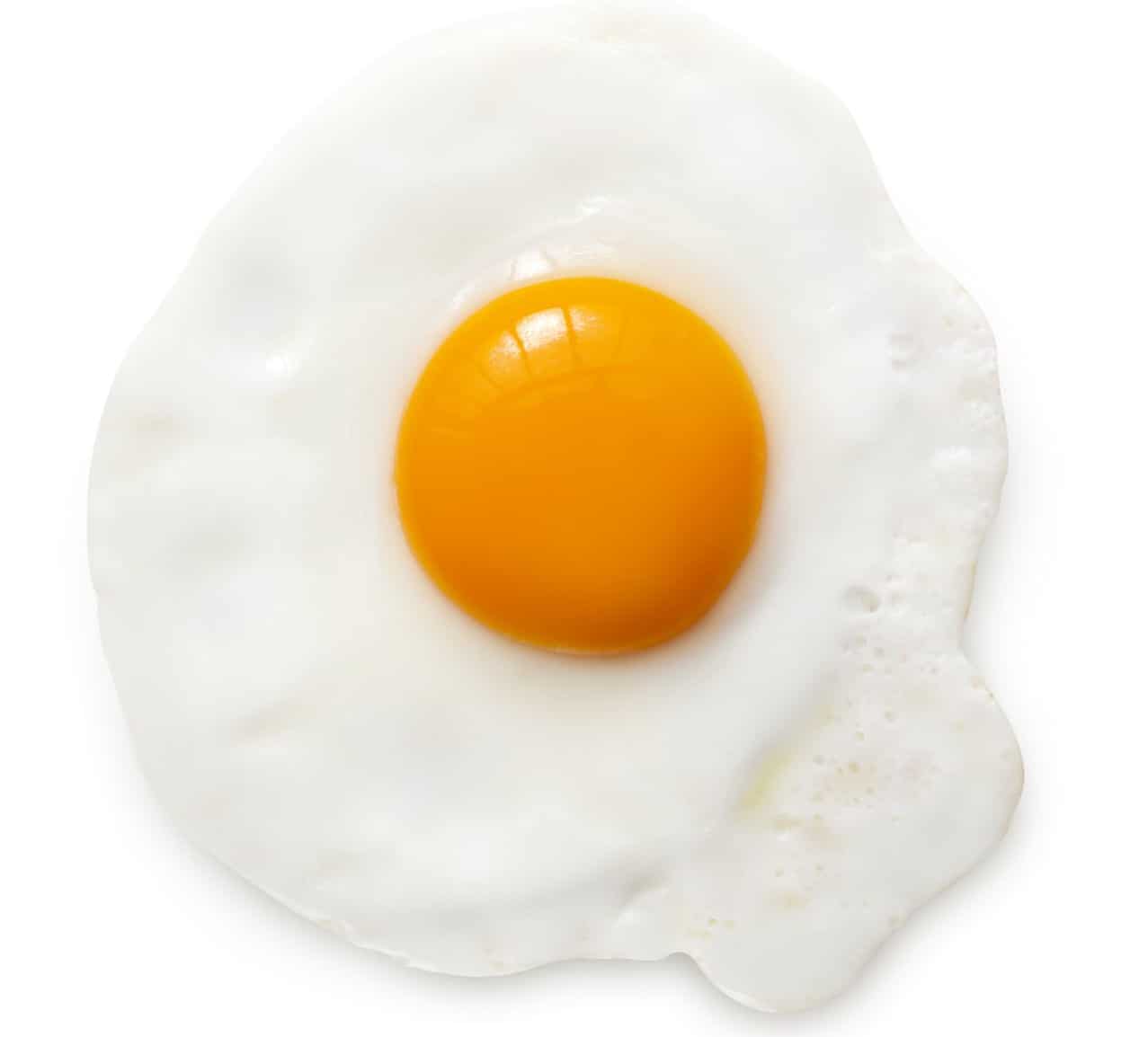
| food | % insulinogenic | insulin load (g/100g) | calories/100g |
| egg yolk | 18% | 12 | 275 |
| whole egg | 30% | 10 | 143 |
| egg white | 74% | 9 | 52 |
The egg white is higher in protein and hence more insulinogenic. At the same time, the energy density (calories/100g) of the egg white is lower, and hence the insulin load per 100g for the egg white is lower.
dairy
Some people believe that red meat and dairy are uniquely insulinogenic. However, my reading of the food insulin index data is that there is nothing special about these foods that aren’t explained by their carbohydrate, protein and fibre content.
Dairy foods typically have a high energy density. This is great if you’re a growing baby, an athlete trying to replenish energy or a bodybuilder trying to spike insulin for hypertrophy. High palatability and high energy density are not a good combination if you’re trying to lose weight.
cheese
| food | % insulinogenic | net carbs/100g | insulin load (g/100g) | calories/100g |
| cream cheese | 10% | 4 | 8 | 348 |
| cottage cheese | 38% | 3 | 9 | 93 |
| ricotta cheese | 25% | 3 | 11 | 174 |
| feta cheese | 22% | 4 | 14 | 265 |
milk and cream
Milk has a higher proportion of insulin calories compared to cheese. Butter and cream have a lower insulin load and proportion of insulinogenic calories.
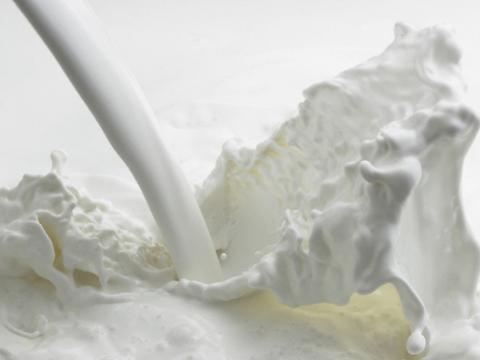
| food | % insulinogenic | net carbs/100g | insulin load (g/100g) | calories/100g |
| butter | 0% | 0 | 1 | 734 |
| cream | 5% | 4 | 5 | 431 |
| goat milk | 40% | 4 | 7 | 69 |
| full cream milk | 44% | 5 | 7 | 65 |
yoghurt
Full fat plain Greek yoghurt has the lowest percentage of insulinogenic calories while the sweetened and low-fat options are extremely insulinogenic.
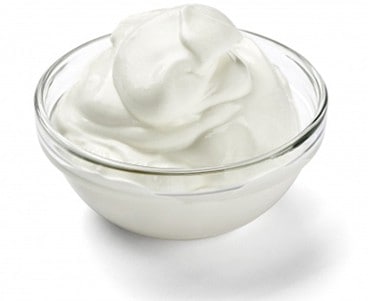
| food | % insulinogenic | net carbs/100g | insulin load (g/100g) | calories/100g |
| Greek Yoghurt | 27% | 6 | 9 | 130 |
| plain low-fat yoghurt | 69% | 7 | 11 | 63 |
| skim milk yoghurt | 86% | 8 | 12 | 55 |
| Low-fat fruit yoghurt | 93% | 19 | 22 | 95 |
fruit
It’s interesting to note that there are only a handful of fruits with a low percentage of insulinogenic calories (i.e. olives and avocados). However, some fruits like oranges have a lower insulin load because of their low energy density and, therefore, may not spike your blood sugar as much as dates or raisins, which have a high proportion of insulinogenic calories as well as a high insulin load. If in doubt, get a blood glucose meter and compare how much your favourite foods raise your blood glucose levels.
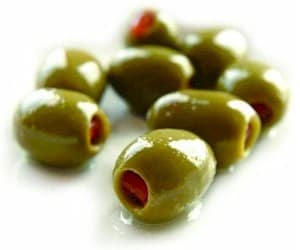
| food | % insulinogenic | insulin load (g/100g) | calories/100g |
| olives | 3% | 1 | 145 |
| avocado | 8% | 3 | 160 |
| blackberries | 27% | 3 | 43 |
| raspberries | 30% | 4 | 52 |
| strawberries | 49% | 4 | 32 |
vegetables
There aren’t many dietary approaches that don’t advise you to eat more vegetables. It’s also hard to overeat non-starchy veggies because they have a very low-calorie density and are high in fibre. Again, due to the low energy density, the net carbohydrates are low in a lot of the non-starchy veggies and hence won’t significantly raise your blood glucose levels.
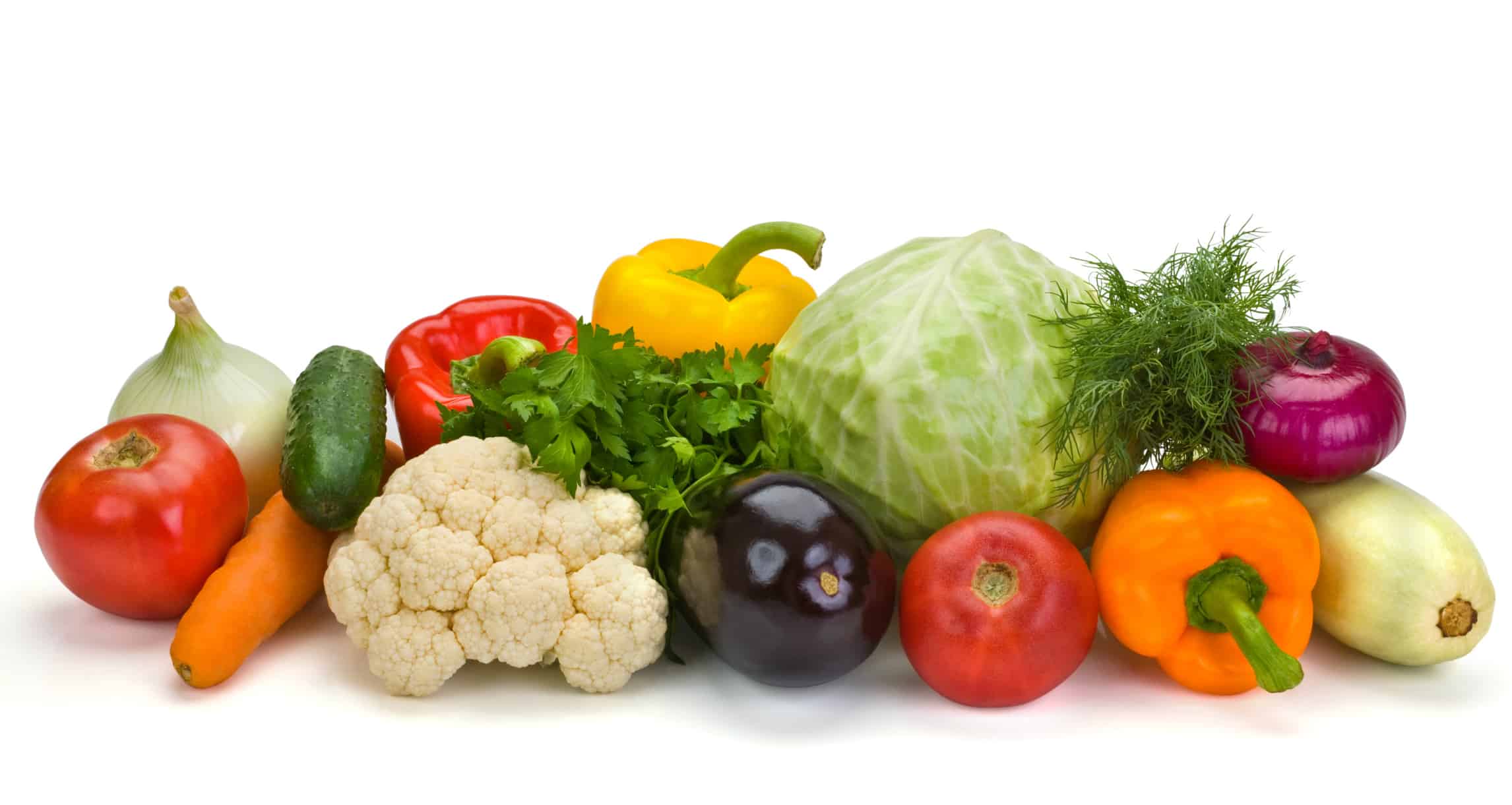
| food | % insulinogenic | insulin load (g/100g) | calories/100g |
| alfalfa | 19% | 1 | 23 |
| chicory greens | 23% | 2 | 23 |
| endive | 23% | 1 | 17 |
| escarole | 24% | 1 | 19 |
| coriander | 30% | 2 | 23 |
| beet greens | 35% | 2 | 22 |
nuts and seeds
Most nuts and seeds have a low percentage of insulinogenic calories, though they have a higher energy density and are possible to overeat.
| food | % insulinogenic | insulin load (g/100g) | calories/100g |
| macadamia nuts | 6% | 12 | 718 |
| pecans | 6% | 12 | 691 |
| coconut cream | 8% | 7 | 330 |
| coconut milk | 8% | 5 | 230 |
| brazil nuts | 9% | 16 | 659 |
seafood
Seafood is a great source of essential fatty acids which are hard to find in plant-based foods.
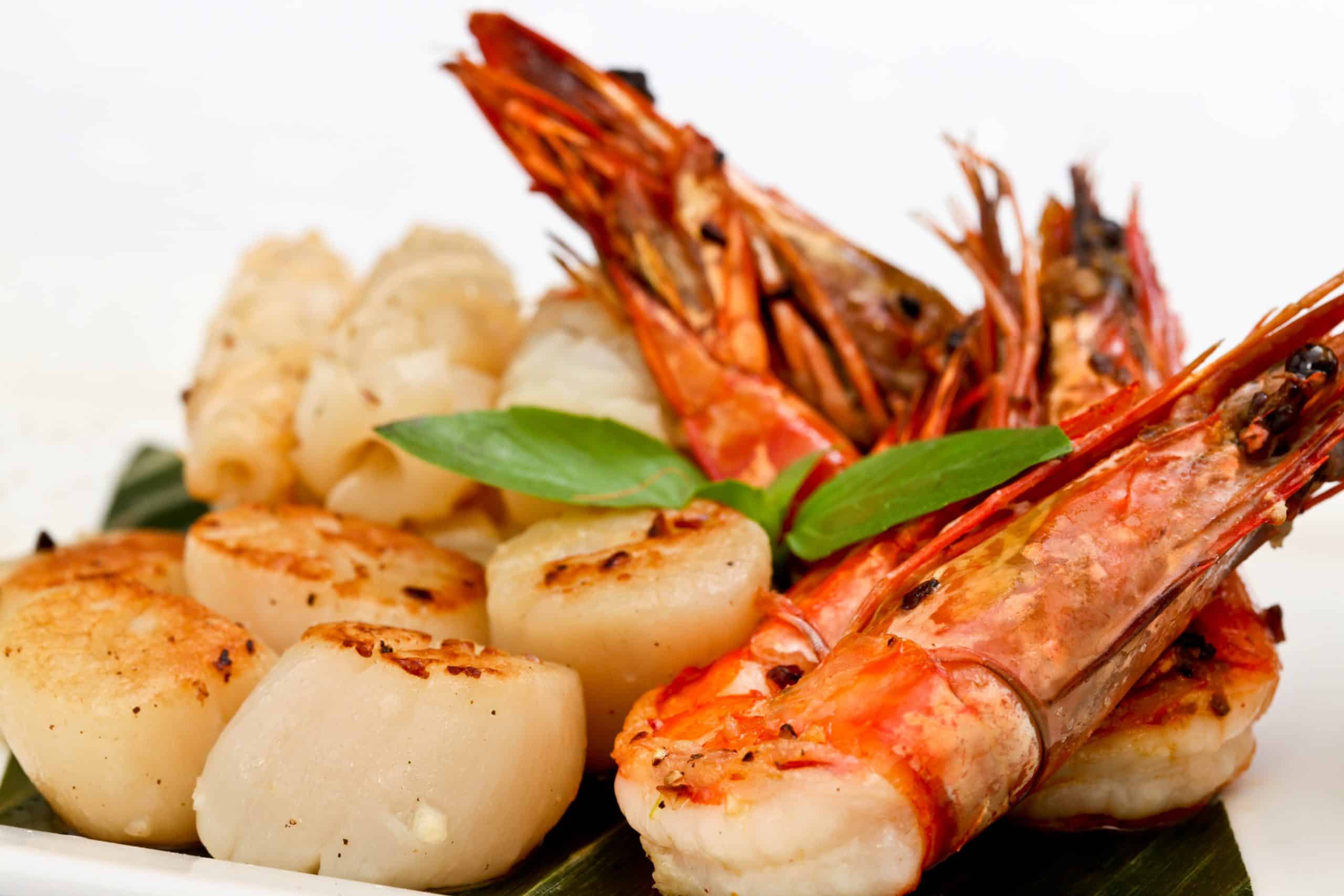
| food | % insulinogenic | insulin load (g/100g) | calories/100g |
| mackerel | 14% | 10 | 305 |
| cisco | 29% | 13 | 177 |
| caviar | 33% | 23 | 264 |
| herring | 36% | 19 | 217 |
| sardine | 37% | 19 | 208 |
animal products
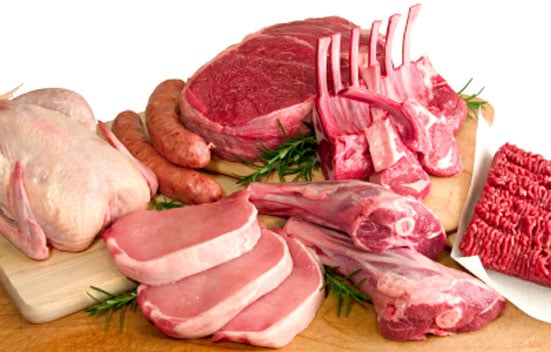
| food | % insulinogenic | insulin load (g/100g) | calories/100g |
| bacon | 11% | 11 | 417 |
| bologna | 11% | 9 | 310 |
| sweetbread | 12% | 9 | 318 |
| liver sausage | 13% | 10 | 331 |
| pepperoni | 13% | 16 | 504 |

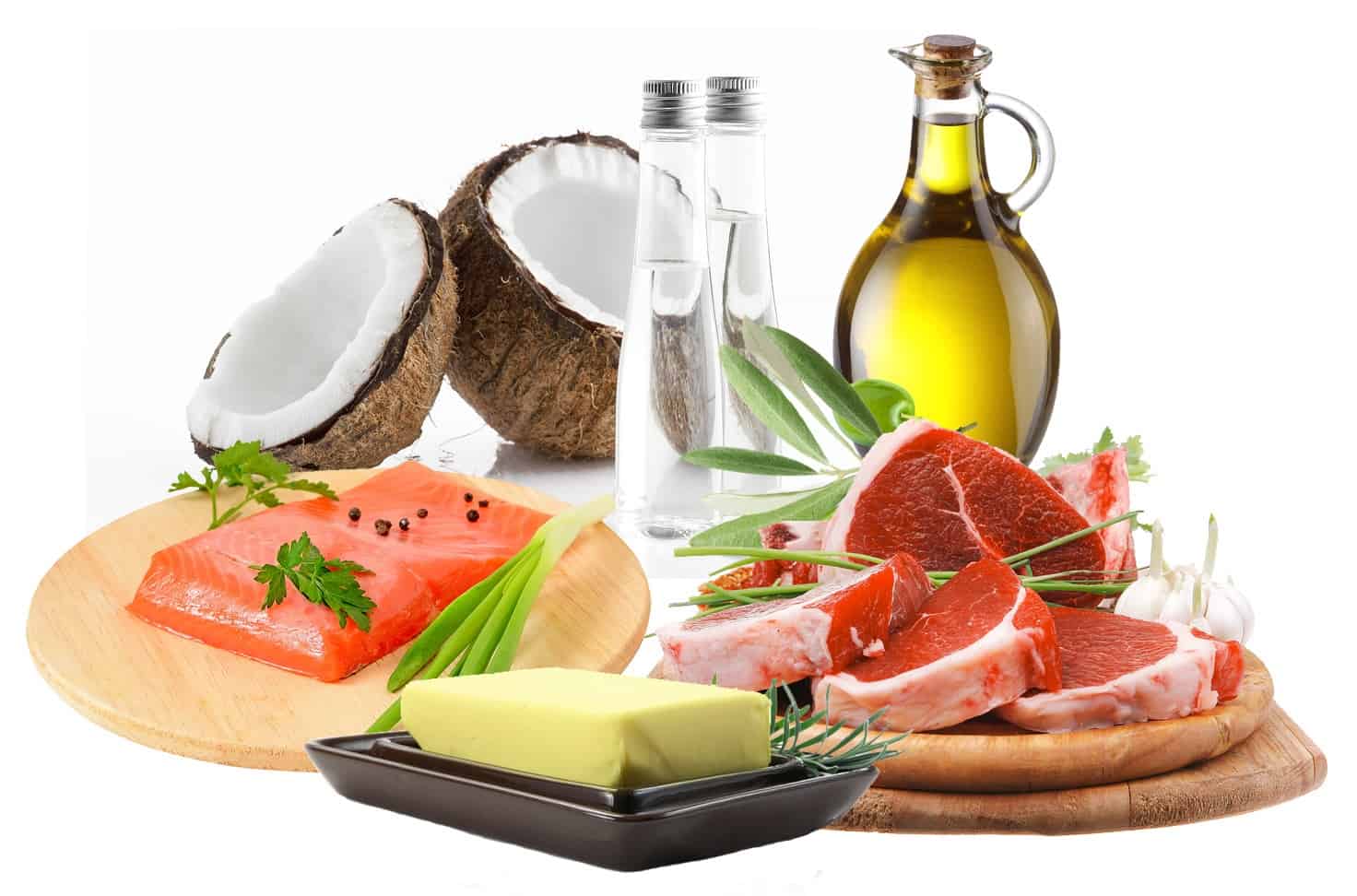
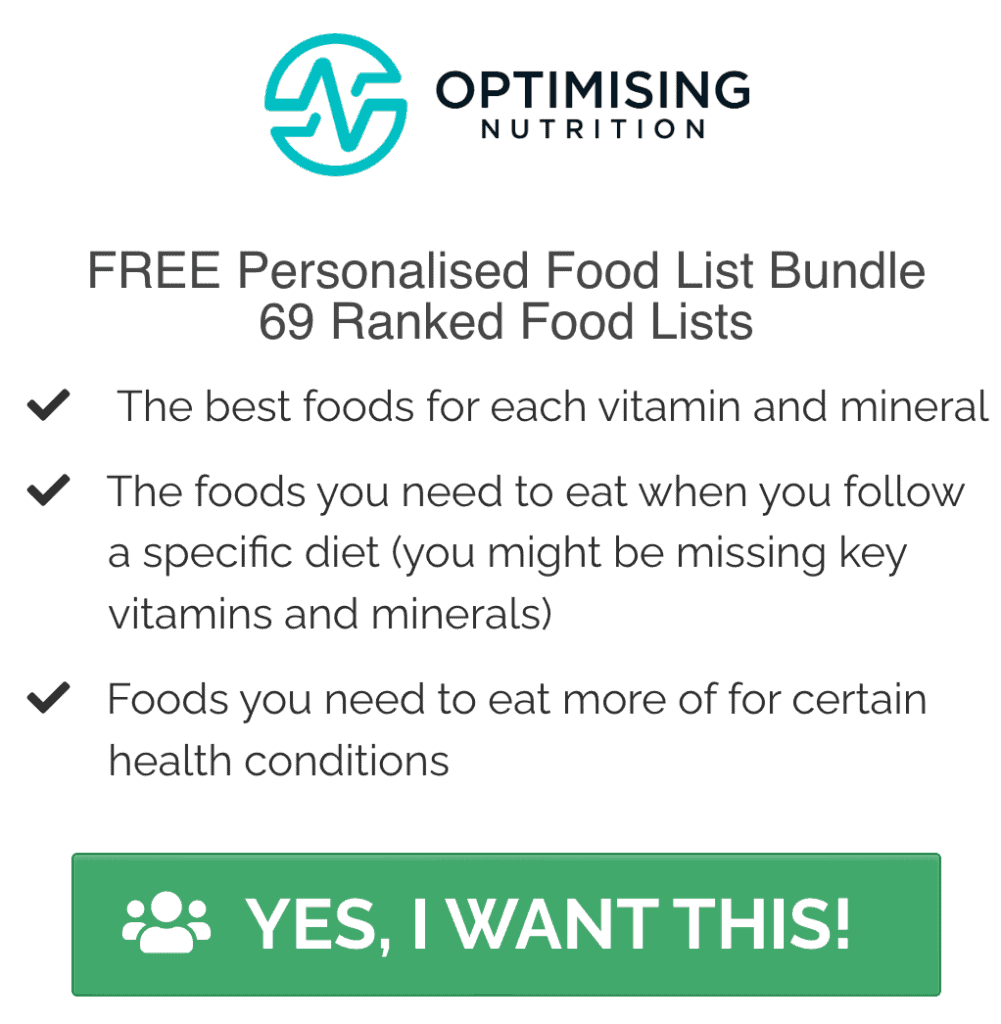

I think the leaner the protein the higher the insulin index but what about tbe load? When i eat 5 eggs vs 170 grams ground beef for the same protein. Also is there enough protein per meal for muscle protein synthesis….ie 3 to 4G leucine…….so which me al has the lowest insulin load to ensure muscle protein synthesis?
Eggs will give you better nutrition and protein quality compared to ground beef. Check out http://nutritiondata.self.com/facts/dairy-and-egg-products/111/2 compared to http://nutritiondata.self.com/facts/beef-products/6206/2. If you’re doing a lot of heavy training then getting 20 to 30% protein while keeping your carbs low is a good approach. Diabetics and people wanting to manage their blood sugars as the first priority may want to keep their protein even lower.
Hi!! Wonderful article, thank you! I don’t see sour cream (full fat, of course) on your list. Where would you rate it?
Good pick up! Cream is amazing at about 3%. Sour cream is about 6%.
I’ve updated the table in the milk section. I have tried to not make the lists too long and convoluted, but I’m more than happy to add any other favourites to the list that people would like to see.
We go through a lot of cream and butter at our place. Buy the best quality you can find / afford and enjoy!
How about tomatoes? Thanks!
Tomatoes have an insulinogenic ratio of 80%. On the up side they have lots of vitamin C, a low calorie density and lots of fibre. But you might want to limit them if you’re trying to stabilise blood sugars.
This is the type of information diabetics need
Thanks
Thank you for this VERY useful article. I will be sharing the OP (from where i came) with others on my FB.
Glad you found it useful Meg. I’m chuffed that it seems to have gone off
Do you have any opinions or thoughts on the insulinogenic of coffee Marty?
Hi Keith
I’ve got a blog post in mind to discuss my beloved addiction to coffee.
I used to enjoy making flat white coffees with coconut sugar. Not so good for the waist line though.
Some options that I’ve run the numbers on that I hope to feature in the future:
– bulletproof coffee: calories = 268, net carbs = 0, insulin load = 0, % insulinogenic = 1%
– coffee with a dash of milk: calories = 15, net carbs = 1g, inssulin load = 1g, % insulinogenic = 39%
– coffee with cream and stevia: calories = 173, net carbs = 1g, insulin load = 1g, % insulinogenic = 5%
– bulletproof coffee with egg: calories = 340, net carbs = 0, insulin load = 4g, % insulinogenic = 4%
– coffee with coconut cream: calories = 166, net carbs = 2g, insulin load = 3g, % insulinogenic = 8%
– flat white with sugar: calories = 128, net carbs = 14g, insulin load = 17g, % insulinogenic = 54%
Depends what you’re trying to achieve with your coffee. I’ll often just have a black coffee or with cream and stevia these days. If I’m trying to get through the morning without a meal I might got the Bulleptproof option. Coconut cream is a good option too but I’m still getting used to the taste and consistency. If you really can’t deal with the other options then just a dash of milk isn’t too bad because it s such a small quantity.
Hope this helps.
Cheers
Marty
Thanks for the reply Marty. I lost a huge amount of weight over a couple of years (250 Pounds), maintained for a year but found I was hungry all the time, which lead me to LCHF 15 months ago, which has worked like a dream for maintenance purposes until about 5 months ago where I have found I am gaining all be it very very slowly and I am racking my brain to why, all the foods I eat would be according your references low insulinogenic, I am so naturally strict with my food, the biggest cheat I do is very occasionally (once a fortnight if that) I’ll have a bowl of porridge made with full fat milk and a Pint of Guinness (Not at the same time).
The only thing I can think that has changed is the amount of coffee we drink, as we bought a bean to cup machine last November and because of that my daily intake of coffee has probably tripled. I take it with a little Double Cream in it or occasionally flat white, made with 2/3 coffee 1/3 Full Fat Milk. (I don’t sweeten it)
I realise (If I am correct) that Coffee alone does not have a nutritional effect on Insulin but there are some reports that caffeine may have an indirect effect?
Anyway I think the only way I will know is to try going without for a few weeks to see if that makes a difference. Obviously years of being of that overweight has left me with what can be described as mischievous metabolism.
I look forward to your Blog on coffee.
I don’t think there’s anything wrong with coffee in and of itself, though it can become an issue if you’re using it too much and burning yourself into the ground (like we’re all prone to do). I found this podcast from Chris Kresser of interest on the topic. http://chriskresser.com/rhr-is-drinking-coffee-good-for-you
The milk and / or the porridge maybe throwing you off track. One way to tell would be to measure your blood sugars and / or ketones and see if anything changed when you had your flat whites or porridge. You might find that you get kicked out of ketosis or that your blood sugars go up and take a few days to come down.
If your blood sugars are excellent (see https://optimisingnutrition.wordpress.com/2015/03/22/diabetes-102/ and https://optimisingnutrition.wordpress.com/2015/03/22/ketosis-the-cure-for-diabetes/) then you could look at a lower nutrient density diet with more fibre and veggies as described in this article – https://optimisingnutrition.wordpress.com/2015/03/22/weight-loss/. It’s hard to go wrong with more veggies.
Best of luck on your journey and congratulations on your great progress so far!
Hi, re the coconut sugar used in coffee, I had read diabetics say it does not spike them, is that true. If trying to keep insulin response low – should it be avoided ?
Andrea
It’s nice that coconut sugar doesn’t spike BGs as much as normal sugar, but when it comes down to it they are all carbs that require insulin and you may need to limit them if your pancreas isn’t keeping up with the overall insulin load of your diet.
The links below may be of interest.
https://optimisingnutrition.wordpress.com/2015/05/03/glycemic-index-load-versus-insulin-load/
https://optimisingnutrition.wordpress.com/2015/04/27/is-sugar-really-toxic-2/
Cheers
Marty
Reblogged this on burnedbutternut and commented:
Now this is very interesting – a good read and very informative!
Thanks so much. I’m so glad people are finding it logical, useful and applicable.
Nice!! Reblogged, hope you don’t mind.
Not at all. Thanks for spreading the word. I’m pretty astounded at how many people are finding this over the last few days through Facebook shares – 745 to date with up to 10k views per day!
thank you so much for sharing. I was finding the whole “eat healthy” thing a bit overwhelming. One article or professional says one thing, and another says something completely different. I found your information logical and informative. Not just the how, but giving us the why is perfect. I am going to start trying this approach. I was already trying to go grain & sugar free … but would have the occasional cheat. Now I understand what is actually happening when I cheat. Can I ask how long, once you began eating LCHF until the weight starting coming off? I am so hopeful I have finally found an answer
Belinda,
Didn’t see a reply to your question, figured I would answer. I have a number of friends/family members who I have turned onto an LCHF diet. Most recently a family member. Stats: 6’2″ 286lbs, currently 253lbs after 12 weeks.
Here is what you should see on an LCHF diet: Increase in HDL, decrease in Triglycerides, decrease in Blood Sugar, increase in LDL. But wait…LDL is what you want to go down? Here’s the explanation. The standard LDL test does not account for small dense particles and large fluffy particles. An LCHF diet will increase the large fluffy ones and decrease the small dense ones, and it’s the small dense ones you are concerned with. So, while the total LDL number will increase, all your other numbers will decrease. You can ask your Dr. for a LDL-P bloodtest to confirm.
This is the standard LCHF diet, you can find more detals on dietdoctor.com, i reference that site here, only because that’s where I got the link this site :-).
Additionally, an LCHF diet is not all or nothing, and there are no “cheat days”. A cheat day assumes you are eating things you should not be, and are cheating. This is ridiculous, and not really sustainable long-term without eliminating foods you really want to eat. For me it’s Donuts, Pizza, Burgers and Fries n’ Sweet Tea. So, one day per week, after 2pm, I eat any and all of those. As you’re looking to lose weight, this keeps the diet mentally fresh, as it’s in 6 day intervals. The argument is that you will spike insulin levels, true…but this is ok. The spike is short lived (one night), you will store more water (1gm carbs = 3gms water), but sheds after a few days. The advantage is that your insulin spike lets your body know that the food famine is over, and it will burn fat at a higher rate (any former or current Atkins dieters will tell you that after a month your rate of loss slows, a carb spike resets this).
Anyway, hope this helps in someway. As an FYI, the entire “Low-Fat” plan is a marketing scam based on a lie (Ancel Keys 7 Countries Study). I’ve eating LCHF for many years and my numbers are great.
Good Luck
There are lots of different approaches such a cyclic keto diet and intermittent fasting that you might find appropriate depending on your goals.
At our place we just try to make nutritious, nutrient dense, yummy, indulgent foods. Unlike a low fat approach I don’t think you feel deprived and in need of a cheat day.
When we do go out to eat we just find that we miss real food, suffer some consequences (e.g. gut distress or blood sugar) and remember why we made the shift to this way of eating.
Marty,
I think by not recognizing the fact that people want to go out and eat Pizza, or Burgers and Fries occasionally, and that it can be done without ruining their diet, we lose a lot of people. When i say “lose”, i mean we lose people that quit their diet, or won’t even start their diet, as it is too restrictive. A diet is not all or nothing and can have “bad” foods in it as part of the diet plan.
Mark
I’m not trying to be militant, just listing the foods based on a certain parameter. No one eats perfectly, including me. Food is meant to be enjoyed, to some extent.
On the flipside though, our experience is that once you find the foods that work for you, you don’t want to go back.
My ten year old daughter knows now when she eats anything with gluten (although her favourite food is pizza and ice cream) she feels really tired and crabby the next day. She can see how she’s gained health and vitality as well as become a lot more lean by eating healthy foods. We’ve also learned to make pizza and ice cream that tastes better than the store bought stuff the negative consequences of the highly processed stuff.
My son knows that if he has something with too much sugar or preservatives he gets hyper and emotional.
My wife knows that eating foods from the top of these list helps her type 1 blood sugars and when we do go out her digestion goes back to what it used to be and she loses her energy with high blood sugars.
I know when I indulge too much I lose my mental clarity and feel myself putting on the weight that I’ve been fighting with for a long time and end up craving the nutrient dense foods that make me feel good!
The aim of the blog is to highlight optimal foods to give people an informed choice.
Cheers
Marty
Marty – just a quick note to say a huge thank you – you’ve saved me 1000 hrs of work with this post ! Absolutely brilliant blog !
Thanks Bridgette. I’m so glad people are finding it and enjoying it!
Are herbs and spices okay with the keto diet?
Definitely! Herbs and spices typically have a very high nutrient density per calorie and only contribute minimally to the insulin load.
Marty,
Well done, thanks for your efforts and research. I’ve mentally added the Insulin load (IL) to my usual calculation of Sugar = (Total Carbs – Fiber). A question of clarification for you (hope i haven’t missed it posted earlier). My typical diet is LCHFIF (Low Carb High Fat Intermittent Fasting). Not that I have any weight to lose, it’s just what i’m comfortable with for bodybuilding. Typically 6 days per week, my day is less than 30gms of sugars per day, with one day of the opposite (very high carbs, high insulin spike). Using carbs-fiber, calculating the 30gms is pretty simple. If using the IL formula for 120gms of protein (example), would keeping the IL at under 100g per day be the equivalent as the <30gms per day formula, or is there more benefit in calculating the IL vs. calculating Carbs?
thanks again,
Mark
Mark
Cyclic keto diets seem to benefit bodybuilders who are going very hard with their carb restriction and very hard with their exercise. Occasionally they find that they benefit from a cheat day to replenish their glycogen stores and hormones so they can go again with intensity. A more moderate approach is probably more appropriate for the normal person trying to manage diabetes or their weight.
Calculating the insulin load will give you a better idea of the overall glucose coming into the system from carbs and protein. Keto body builders like to run with high protein (30% or so) for muscle growth. People with blood sugar issues may want to bring this back a little (say 15 to 20%).
Again, this article will shed some more light on the concepts. https://optimisingnutrition.wordpress.com/2015/06/04/the-goldilocks-glucose-zone/
Cheers
Marty
Just found this page and printed it to adhere to the fridge for future shopping lists and meal choices–question: Would you hapen to have the insulinogenic info on prosciutto, chicken skin (baked), and pork rinds? My diabetic husband thanks you in advance.
we’ve got this list stuck to our fridge. the ranking in the list for diabetics also includes nutrient density rather than just low insulin levels.
https://optimisingnutrition.wordpress.com/2015/04/06/optimal-foods-for-blood-sugar-regulation-and-nutritoinal-ketosis/
there’s also a link to the calculated food insulin index for all of the foods in the USDA database noted at the end of the document – https://www.dropbox.com/s/yjwctm7skrgqy5i/optimising%20nutrition%20managing%20insulin%20-%20full%20list%20of%20insulinogenic%20foods.xlsx?dl=0 – and also to a calculator that your can run your own numbers if you have the macro data – https://jscalc.io/calc/QaltoCGzlT7FTf3j . Enjoy!
just shared on my website http://www.singaporediabeteshealth.com. Very good information
thanks Matty! 🙂
thanks for sharing.
so glad you liked it.
Hi Marty, an excellent, well-written and informative article. I have been following a HFLC eating plan for 4 months now and I am converted – the foods are so much more ‘decadent’ (translation – cream, cheeses and streaky bacon) and as a monster bonus, my hip osteoarthritis pain is under control. Understanding food science = exciting times for ‘foodies’. Shaz. Xx
Thanks Sharon! Glad you’re enjoying it. It’s nice to be able to enjoy flavoursome decadent food and not feeling guilty because you understand that it can actually be good for you.
Hey Marty! Thank you for all of your hard work! I have been following a LCHF diet w extended intermittent fasting for several months. This week, I did a 72 hr fast and then ate an extremely LCHF dinner last night, breaking my fast. My ketones this am were 1.3, but my blood glucose was 113. This is not an unusual result for me. Do you have any thoughts? Thank you again. Ann
A few thoughts…
Ketones are slower to react than blood glucose, so it’s possible that your glucose could raise after a meal after a long fast.
Did you test your glucose at the end of your fast before you ate? My experience is that glucose is pretty low then after your glycogen stores are exhausted.
Glucose often rises in the morning as your liver dumps glucose into the system in preparation for the day (aka the dawn phenomenon) so the 6.2mmol/L in the morning could be due to that.
If you’re really concerned you could try to get your doctor to test your insulin and maybe your c-peptide levels to see if your pancreas is pumping out enough insulin.
This is a very helpful guide. I wonder if you could help me understand why there is a different value for some of the foods listed. In your 8000 food database, for example:
Item Insulin Carb Protein Fat Fiber Kcal
4399 BROCCOLI,RAW 55 6.64 2.82 0.37 2.6 41
In the article above, broccoli is listed at 29%. That is a difference of 26% from the database value. Curious – is the lower one measured vs a calculated value for the 8000 food items? I also noticed that beverages, like tea were high among the food items, when I didn’t see any carbs.
Thanks, Matt
I really want to read this article, but there is a tweet of some sort on the right side which keeps expanding and contracting over and over, so the whole page goes big and small over and over on my iPad and becomes unreadable.
Thanks for the heads up Brian. I’ve killed the Twitter graphic in the side bar that was flickering so hopefully that will improve things on the iPad. Let me know how it looks at your end.
Yes. Thank you.
Thanks for the heads up that it wasn’t only me. Happy reading.
Amazing, after having read this one article I am a fan!
Glad I scrolled to the bottom, found the opt-in for following your blog. Amazingly detailed and simple to follow. Looking forward to digging around for meal plans. Thanks for this. For once I’m kinda bummed you don’t seem to be selling anything. I’ll keep digging.
Amazing site…though will not allow me to sign in
Thanks Dianne. You can just like to follow or join the closed fb group at https://www.facebook.com/groups/optimisingnutrition/
You’re supposed to be ‘optimising nutrition’ and you list s**t like frankfurters? They aren’t a food, the are a cocktail of meat off its and crap from the shaughterhouse floor mixed with a heap of nasty chemicals and filler… And your article appears to promote them as healthy, despite the recent reports of their consumption being linked to childhood cancers… Do everyone a favour and stick with proper nutritious foods… Or change your name!!
This list of foods only sorts foods by their insulinogenic potential. I’ve reported the data, the rankings that the system gave me. I haven’t made a value judgement on the outputs.
Where it gets more useful is when you combine the insulinogenic potential with the concept of nutrient density and the list of foods become much more useful, healthy and nutritious.
See https://optimisingnutrition.wordpress.com/2015/10/19/optimal-foods-for-different-goals/ and https://optimisingnutrition.wordpress.com/2015/03/22/cheat-sheets/
I please just want to ask; as a type 1.5 diabetic (late onset type 1; insulin dependent), if fatty foods are so great, why does my blood sugar go sky high a few hours after eating fatty foods? To preach a message of “eating fatty foods” without explicitly specifying that it should be low calorific vegetable fats is irresponsible.
Low fat foods do not raise blood glucose as much as carbohydrate containing foods. See this list of diabetic friendly foods. https://optimisingnutrition.wordpress.com/2015/04/06/optimal-foods-for-blood-sugar-regulation-and-nutritoinal-ketosis/
Not sure I agree with you on ‘low calorific vegetable fats’ either. See https://optimisingnutrition.wordpress.com/2015/10/11/good-fats-bad-fats/
Check out this article for more data on what raises blood glucose. https://optimisingnutrition.wordpress.com/2015/06/29/trends-outliers-insulin-and-protein/
Manage the insulin load of your diet to reduce blood glucose. https://optimisingnutrition.wordpress.com/2015/03/22/ketosis-the-cure-for-diabetes/
Nutrient density is also a very important consideration to balance a focus on high fat diet. https://optimisingnutrition.wordpress.com/2015/10/19/optimal-foods-for-different-goals/
That’s a really interesting observation as, theoretically, fat does nothing to trigger insulin release.
What are you having with your fats? Any vegetables, fruit, artificial processed foods, artificial sweeteners, grains, meat, eggs, fish, etc? And what sorts of fats? Traditional fats like butter, lard, ghee, tallow, olive oil, red palm oil, macademia nut oil, etc. Or have you been using modern oils like canola, sunflower, rapeseed, or other vegetable oils or spreads?
Something else in your meal might be spiking your insulin. Eg artificial sweeteners and MSG/free glutamate can spike insulin as well.
There has also been some research to suggest that trans fats can or may cause insulin resistance, so modern oils and spreads may be associated with higher than expected blood sugar levels in non-diabetics while their insulin levels may not be high enough to manage their blood glucose levels. There are concerns about modern oils and trans fats probably contribute to insulin resistance and type 2 diabetes. Not sure whether inter esterified fats do anything to insulin as well.
Another thing that might occur is that fat in the diet allows fat soluble things in the gut to be absorbed across the digestive tract and into the blood stream, which is great in the case of fat soluble vitamins. But less than wonderful in the case of fat soluble toxins, which are plentiful in modern diets. In addition lipopolysaccharides (LPS) can probably cross the gut in the presence of fats. LPS are pretty nasty toxins made by gram negative bacteria, so we probably all have some of these to some degree, but gut flora varies from person to person, and there is some research to suggest that people with diabetes have more pathogenic gut flora than some other folks. I have heard somewhere that poly phenolic compounds may block the translocation of LPS across the gut wall, so that would be things like brightly colored fruits and veg, cocoa, herbs, etc.
Finally stress hormones, like cortisol, cause a spike in blood sugar which results in a secondary rise in insulin. If a food disagrees with you and you do not tolerate it well, if you have a leaky gut, if you have food allergies, if you are histamine intolerant or are unable to digest certain foods well then that can be enough of a stressor to cause cortisol release. You may even be able to notice a rise in your pulse rare after eating some foods which might indicate a stress response. Particular candidates might be things like peanuts, tree nuts and dairy here, but listen to your body. Also some processed meats like bacon and bologna may actually contain a lot of chemicals which could be resulting in stress.
I hope you find answers. It would be interesting to see if you come up with a solution. Best of luck.
Hi Catriona!
Thank you very much!
Yes some of the things you mention makes much sense. I see the blood sugar rise few hours after eating cheese or fatty meats (mince sausage etc.). Sometimes I eat this meat with only vegetables (green ones; beans, broccoli or salad), but sometimes also with low GI seed bread (which I compensate for with short working insulin). However, even with insulin compensation; a few hours after a fatty meal I get a bloodsugar spike; irrepective of if there was carb present or not . This is almost always the case, but especially with cheese (“low fat” Edam/Mozerella). I do however get higher pulse rates sometimes after eating certain foods, but will try see in future which ones. (I am not lactose intolerant; not that I know of anyway…)
I only use olive oil for cooking and stay away from all other oils/fats. I think the only artificial foods I eat is saccharin containing cooldrink and “olive oil margarine”. I have a very limited diet and see it as fairly conservative; i.e. very limited to Avocado, meats, low gi bread (low quantity), green veg and salads; generally “low fat” “low carb”.
There was a time I had many food allergy episodes and I went for testing of the standard ones (gluten, egg, shellfish etc.) but all came back negative; except for a “general raised allergy indicator”, whatever that means. I saw that many of my allergies happenend after eating egg, so I stopped eating egg and now it’s been months since I had any episodes, so I blame egg. (Which makes any type of LCHF diet difficult, since almost all of these contain egg).
I have found that high fat meals or rich meals make me feel a bit awry; I need to take something for the stomach. Maybe it’s something to do with insulin resitance of the liver…
But in any case; I get frustrated when people promote high fat diet as this miracle cure for diabetes, because I tried it and it backfired. I fear this might be the case with other diabetics as well.
I will monitor my intakes and come back to you on these topics.
Thank you very much you have been of great help!
P.s. This is what I was speaking about:
http://www.mendosa.com/The-Fat-of-the-Matter-How-Dietary-Fat-Effects-Blood-Glucose.htm
The blood glucose rise a few hours after a low carb meal is likely from the protein via gluconeogenesis. See https://optimisingnutrition.wordpress.com/2015/08/10/insulin-dosing-options-for-type-1-diabetes/ for some ideas on how to time your doses. Diabetics also struggle with their digestion. If you have SIBO then you might struggle to digest a high fat meal. Ironically the SIBO is caused by excess simple carbs. Consider talking to a naturopath or someone who can help you through the treatment of SIBO. Elizma Labert (http://clinic.realizehealth.com.au/practitioners/) helped my wife through SIBO to a point she is able to thrive on a higher fat diet which allows her to achieve more stable blood glucose levels and mild nutritional ketosis.
Great to see so many useful suggestions on here. Lots of great suggestions. Just a couple more thoughts kicking around in my head, not all of which are quite so obviously related to fats, carbs, proteins and insulin:
There could be a degree of impact from other hormones. I’d mentioned cortisol, but the adrenals do make other hormones. There is also the involvement of the hypothalamic-pituitary-adrenal axis and how it interacts with the thyroid as well. Thyroid problems are extremely common at the moment, perhaps seen more in women, but generally under-recognized and under diagnosed. It might be worth thinking about getting a naturopath to run a thyroid panel and looking at the optimal ranges for this. Thyroid hormones are necessary for energy regulation, with blood glucose control being a big part of that. Suboptimal thyroid hormone levels are closely associated with blood sugar levels. http://chriskresser.com/thyroid-blood-sugar-metabolic-syndrome/
High blood sugars tend to act as a diuretic, and over time people with higher glucose levels may be at increased risk of losing nutrients via the kidneys including, but not limited to, magnesium, potassium, zinc, thiamine (vitamin B1), and I suspect the other water soluble B vitamins, especially riboflavin and B6. In addition diabetes is a high stress condition, possibly with some mitochondrial dysfunction, and almost certainly with increased levels of oxidative stress. You could look into supplementing with antioxidants like vitamin C, coenzyme Q10, mixed tocopherol form of vitamin E, turmeric/curcumin. Antioxidants may be a bit contentious. You could also have a look at foods which are naturally rich in selenium like kidney, small fish like sardines (mercury becomes a bit if an issue as fish become bigger, have longer lifespans and are higher up the food chain), or possibly take a small amount of selenium as a supplement. A lot of people’s diets are deficient in iodine, while being exposed to excessive amounts of the other halides like bromide, fluoride and chloride. You could read up a bit on iodine (another contentious one).
Liver is a very important metabolic organ, and non alcoholic fatty liver is increasing. Interestingly there seems to be a link between fatty liver and choline deficiency. Have you heard much yet about the methylation cycle? It’s a pretty hot topic in functional medicine, although it gets pretty complicated. It might be useful to eat some liver a couple of times a week as liver is quite the superfood, supplying excellent amounts of B vitamins, zinc, copper, iron, some selenium, co-Q10, vitamin C, choline and other nutrients. It doesn’t actually contain much toxins at all. It takes toxins and rapidly transports them out to bile or blood where the toxins can be eliminated or stored in fatty tissue. A lot of people take a regular activated B complex which is more expensive than a regular B complex. B vitamins can be very powerful, and different people need different amounts of them, so some people do well with an activated B supplement, but some people seem to react badly.
The exercise thing is a very interesting phenomenon. It is widely said that exercise improves insulin sensitivity. However what seems to actually occur is that vigorous exercise like high intensity interval training, sprints, resistance training or lifting heavy objects actually causes glucose transporters (GLUT 4 and GLUT 12) to spontaneously move to the surface of muscle cells without insulin triggering this and they stay there for a certain amount if time. I think it’s part if the fight or flight response to ensure that your muscles have the energy necessary to get you out of danger. So glucose can actually enter the muscle cells for a short period of time after this sort of exercise without the need for insulin. Can’t remember whether you have 30 minutes or 1 hour to get your carbs in post workout, but it’s not very long. But you can use this to drop your blood sugar levels and replete the glycogen used up by the exercise, which is pretty cool. Unfortunately if exercise goes on for too long (maybe longer than 45 minutes or so), you start to see a cortisol rise, so variable lengths of exercise or a tendency to go for more endurance type activities might actually give you a more unpredictable blood sugar response.
Sarah Ballantyne (the paleo mom) has written a couple of excellent books on the autoimmune protocol. One is a theory book (the paleo approach). It’s very detailed and long, but exceptionally thorough. The other is a cookbook (the paleo approach cookbook). All the recipes are autoimmune friendly, which basically means completely unprocessed, grain free, dairy free, legume free, egg free, nightshade free, nutrient dense and no processed sugar. She has also worked out the complete breakdown of all the nutrients per portion, which could be very handy. There are other autoimmune protocol cookbooks out there too. Could give you some more ideas of things to eat.
Best of luck. Lots to think about with all these posts. There’s so much information out there.
Lots of good thoughts there.. Thanks.
Great post, Catriona. I have started making kefir (with a second fermentation so as to further reduce the lactose) and wonder if anyone is familiar with this food which is meant to give good bacteria to the gut and chase out bad bacteria.
The fat doesn’t increase your blood sugar, but it does slow digestion – if your high fat meal also contains carbs then it’s still the carbs raising your blood sugar, just slower and over a much longer time.
Try eating a high fat meal that does not contain carbs, learn to bolus for protein if you’re not already, and see the difference! A low bump in the blood sugars instead of the major peak 🙂
Thanks Embob!
The thing is this happens to me even without carbs in the meal. I blame insulin resitance of the liver and/or something similar.
I will take note of this and monitor accordingly! Thank you very much!
Focus on restoring insulin sensitivity through reducing insulin load and / or fasting to stop the liver spewing extra glucose into the bloodstream.
“low calorific vegetable fats”? Fat has a calorific value of 9 cal per gram, regardless of source. Vegetable fats are no less calorific than animal fats.
Sounds like is from the same dictionary as “artery clogging saturated fats”?
After reading many of these nutrition articles, and trying to understand ketosis better, my only question is, with turning the food pyramid on its head and promoting a high fat diet, what are the true cardiac health risks for coronary artery disease? High fat has been shown to increase intra arterial plaque which is a risk for cardiac and vascular issues, specifically MI and stroke. High fat diets have also been linked to cancers. Is this even safe??
It seems that high blood glucose levels have a very strong correlation with heart disease, so normalizing blood glucose levels with minimal medications seems to be a high priority. See https://optimisingnutrition.wordpress.com/2015/03/22/diabetes-102/
The relationship between dietary fat, cholesterol in the blood and heart health is less clear. Nina Tiescholz’s Big Fat Surprise is a good read here.
As well as lowering blood glucose there are a number of fats that clearly have beneficial impacts on our health. See https://optimisingnutrition.wordpress.com/2015/10/11/good-fats-bad-fats/
Hi Marty,
Thank you very much for your responses. There are some good tips in there which I will be sure to look at.
Catriona gave some insightful tips which I will be sure to follow up. Maybe I am a unique case and have some other complicated response to fats or some other food, although I maintain that agressive implimentation of only LCHF can be dangerous since it does not include the whole picture.
What do you say about the liver’s contribution in terms of insulin resistance, glucogen etc. when fats are involved? Also body energy intake vs. output (i.e. Muscles)?
I get that fat takes longer to enter the bloodstream, and might not increase insulin production, but I’ve found for me it goes about energy intake vs. energy used. Insulin and all the rest of blood sugar effects are secondary transients in the bigger scheme of things of energy management in the body.
I.e.
Even though I am diabetic I can eat carbs under special circumstances, i.e. Just just before I excercise, since insulin resistance is then low and the muscles will use energy, being primary consumer of glucose in the blood. If one does not use the energy, it will have to go somewhere else; either build up in bloodstream, Restore glycogen reserves, go to liver fats, stored in other fat reserves etc. If I excercise every day, this flow of energy from food to muscles through glycogen will put less strain on insulin production and decrase insulin resistance in the cells.
But If you eat a lot of fat and you don’t use the energy, there will still be some other problem due to energy buildup. Sure, insulin might be less in the equation, but the energy is still there and could create issues; especially for the liver.
So I see this problem of high carb (quick release energy intake) is surely also present (but different) for proteins and fats (slow release enegy intake)? High energy content that needs to go somewhere i.e. Bloodstream, muscles or liver. Low energy content foods or low volume high energy conent foods do not create such issues. I.e. High energy fats can raise blood sugar levels as well due to various mechanisms if there is excessive stress or fault with any of the mechanisms in the chain of energy management.
Or am I missing something?
I propose that one cannot view diet in isolation. It is imperative that excercise and timing of energy also be considered for specialist diets and especially for diabetics, since in the end diabetes is largely a breakdown in the body’s energy storage and management system due to overstraining it; either due to excessive eating or stress/autoimmune effects.
Managing diabetes is like assisting/taking over the natural body’s management system. Insulin, food, energy intake, energy output, all of these form part of this system and needs to be properly accounted for.
Kind regards.
http://www.mendosa.com/The-Fat-of-the-Matter-How-Dietary-Fat-Effects-Blood-Glucose.htm
Total energy intake is always going to be important, however for people who are insulin resistant it seems that a low insulin load diet will reduce appetite because the lower circulating insulin levels will allow stored body fat to be accessed for fuel (see http://www.ncbi.nlm.nih.gov/pubmed/15897479).
A fatty liver which is insulin certainly contributes to high blood glucose levels because it does not control gluconeogenesis as well as a non-fatty liver in someone who is insulin sensitive. This is not necessarily caused by consuming fat though. The solution seems to be to reduce the insulin load which will enable the stored fat around the liver to be accessed which will restore insulin sensitivity and then enable the liver to stop putting out extra glucose into the blood stream.
The body can convert some portions of fat to glucose (pyruvate recycling) however this effect is negligible other than in a long term starvation situation. The food insulin index data indicates that iit is largely the dietary carbohydrates and to some extent the protein that raise the glucose in the blood, and even more so if your liver is not insulin sensitive.
Hi there, thank you for a great informative article. 2 years ago I had my thyroid removed due to thyroid cancer and only 3 months ago found my ideal meds dosage which is 100mcg levothyroxine & 20 mcg liothyronine. A month after that I stared a hflc diet eating a big breakfast in the morning consisting of eggs/pork belly and avo and then a small snack of baby bel cheese/nut at 2 and then dinner. I have also been running 5/6 Km’s 3 times a week and whilst on the diet found I just couldn’t run, absolutely NO ENERGY so started reading up about lchf and exercise and then came across one which suggested people without a thyroid should not do extreme diets so after 9 weeks of lchf I ditched the diet and now just limiting carbs as much as possible. My running is back up to where it was before the diet and overall just have more energy. I have found though that I’m hungry all the time and just constantly craving sugar. After all that I really just want to find out if people with no thyroid can do this diet or will it play havoc with my meds. Any advice would be appreciated, especially around the no energy/running problem as that’s an important part of my week. Many thanks for your time, Kim
Great informative post. I liked all the scientific physiological data as well as the concise lists. Thank you
Hey thanks.
Interesting. Congratulations !
As far as I am concerned you are a miracle worker and the people leaving negative or challenging comments are trying to make this into something it isn’t. About 10 years ago, a combination of things caused me to become insulin resistant. (Taking an antidepressant, PCOS, and quitting a competitive weight lifting and fitness regime the year before). Without changing my “healthy” eating habits at all i went from 114 pounds to 270 pounds in two years. This happened while eating a diet of whole foods, mostly fruit and vegetables with occasional fish or lean meats – about 1500 calories a day. I spent 6 years struggling to lose the weight and managed to lose 100 pounds but only on a 500 calorie a day low carb diet under the care of a bariatric doctor. Then I got pregnant – I didn’t know until I was 4 months along – and had to go back on my old “healthy” diet featuring whole grains, vegetables and fruits. I gained 80 pounds in 5 months and then was unable to breastfeed to lose the weight due to PCOS. So I am back under the care of the bariatric doctor on my miserable low carb/high protein 500 calorie a day regime with 1-3 hours of cardio a day — ekeing out a glacially slow 1 pound a week weight loss. And immediately gaining 7-13 within a day if I cheat AT ALL. Then I see another doctor who tells me protein can turn into glucose. I find your sight. I eat high fat for one week based on your chart and lose FIVE POUNDS in ONE WEEK. For an insulin resistant person who has tried EVERYTHING and is facing life with 240 pounds on a 5 foot 2 inch frame, you have given me a gift beyond imagining. HOPE. RETURN ON MY EFFORTS!!!! Thank you!!!!!
Congratulations Adrienne! 🙂
You might be interested in checking out the ONMI facebook group for some extra support going forward. https://www.facebook.com/groups/optimisingnutrition/
How are you doing? I am fasting Dr Fung style and I already dropped 14lbs in 4 weeks.
just a heads-up – the image is broken https://upload.wikimedia.org/wikipedia/commons/8/89/USMC-120712-M-2815I-003.jpg
Hey Guys, Anyone know why I get a headache after i eat (anything, keto, protein). Is there an association between insulin and headache?
http://optimisingnutrition.com/2016/02/15/how-to-use-your-glucose-meter-as-a-fuel-gauge/
Fantastic Site! Thanks for all your work Marty!
I thought the insulin index for honey should be proportional to the glucose content and not the fructose content. Say 50%?
IMO, an under appreciated quality of honey is dental plaque formation or lack thereof.
Great blog!
John
Thank you! Thank you! Thank you!!
I have been searching for hours on end for this information. I am so glad someone stepped up to the plate….literally.
Hello Marty, thank you so much for this articles! I’ve been looking for this info for a lot of time! May I ask about green – not mature bananas? As I read they are not yet loaded with sugar/fructose and they have the benefits of potassium/magnesium and the resistant starch. Grazie !
Blueberries are listed twice- once with load of 9 and second time with li ad of 14. Which is correct?